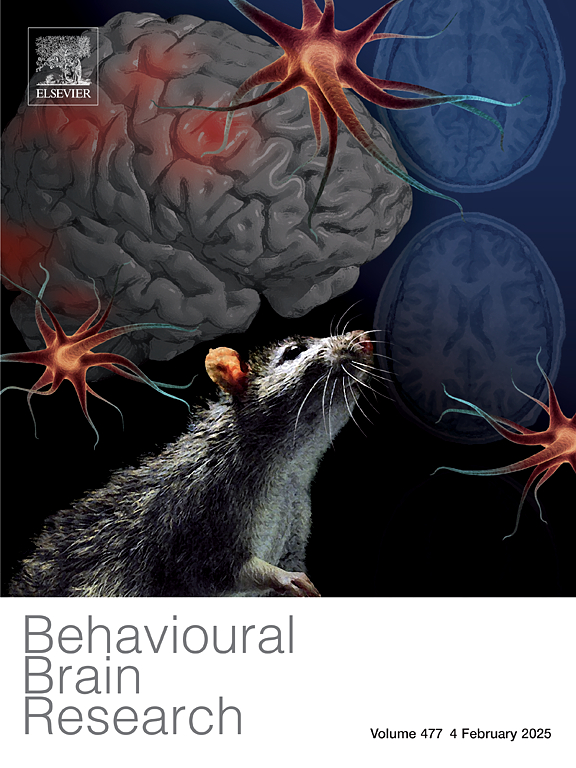Perceived levels of environmental unpredictability and changes in visual attention mechanisms in adults
IF 2.6
3区 心理学
Q2 BEHAVIORAL SCIENCES
引用次数: 0
Abstract
Selective attention mechanisms change in response to variations in sensory experiences and environmental demands. In other words, they are influenced not only by favorable contextual experiences but also by unfavorable ones. Therefore, exposure to environmental unpredictability and chaos could influence selective attention. However, there is a lack of studies directly investigating this relationship. This study examined how household chaos and daily unpredictability relate to selective attention at behavioral and neural levels in young adults (n = 39). Participants were categorized as experiencing high or low unpredictability and chaos based on their scores on respective scales. Using EEG recordings, we measured the amplitude of the N2pc and Pd components, along with accuracy and reaction times, during the performance in two visual search tasks that varied in the level of interference from distracting stimuli (presence vs. absence of a color singleton distractor). The results revealed differences in neural activity related to unpredictability but not chaos. Specifically, in the high-interference visual search task, both groups exhibited an N2pc component associated with the singleton distractor, reflecting attentional capture by distracting information. However, the high-unpredictability group showed a larger N2pc amplitude associated with the target and a larger Pd amplitude associated with the distractor. These findings suggest greater engagement of reactive attentional resources to suppress distractors and select the target, and support hypotheses suggesting that adverse contexts involving unpredictability or chaos relate to changes in how individuals process distracting or irrelevant information.
环境不可预测性的感知水平与成人视觉注意机制的变化
选择性注意机制随着感官体验和环境需求的变化而变化。换句话说,他们不仅会受到有利的背景经历的影响,也会受到不利的背景经历的影响。因此,暴露于环境的不可预测性和混乱可能会影响选择性注意。然而,缺乏直接调查这种关系的研究。这项研究调查了家庭混乱和日常不可预测性如何与年轻人在行为和神经水平上的选择性注意相关(n = 39)。根据参与者在各自量表上的得分,他们被分为经历高或低不可预测性和混乱的两类。利用脑电图记录,我们测量了N2pc和Pd成分的振幅,以及准确性和反应时间,在两个视觉搜索任务中,分散刺激的干扰水平不同(存在与不存在颜色单一干扰物)。结果显示,神经活动的差异与不可预测性有关,而与混乱无关。具体来说,在高干扰视觉搜索任务中,两组都表现出与单一干扰相关的N2pc成分,反映了通过分散信息捕获注意力。然而,高不可预测性组显示出与目标相关的更大的N2pc振幅和与分心物相关的更大的Pd振幅。这些研究结果表明,反应性注意力资源在抑制干扰和选择目标方面发挥了更大的作用,并支持了一些假设,即涉及不可预测性或混乱的不利环境与个体如何处理分散注意力或无关信息的变化有关。
本文章由计算机程序翻译,如有差异,请以英文原文为准。
求助全文
约1分钟内获得全文
求助全文
来源期刊

Behavioural Brain Research
医学-行为科学
CiteScore
5.60
自引率
0.00%
发文量
383
审稿时长
61 days
期刊介绍:
Behavioural Brain Research is an international, interdisciplinary journal dedicated to the publication of articles in the field of behavioural neuroscience, broadly defined. Contributions from the entire range of disciplines that comprise the neurosciences, behavioural sciences or cognitive sciences are appropriate, as long as the goal is to delineate the neural mechanisms underlying behaviour. Thus, studies may range from neurophysiological, neuroanatomical, neurochemical or neuropharmacological analysis of brain-behaviour relations, including the use of molecular genetic or behavioural genetic approaches, to studies that involve the use of brain imaging techniques, to neuroethological studies. Reports of original research, of major methodological advances, or of novel conceptual approaches are all encouraged. The journal will also consider critical reviews on selected topics.
 求助内容:
求助内容: 应助结果提醒方式:
应助结果提醒方式:


